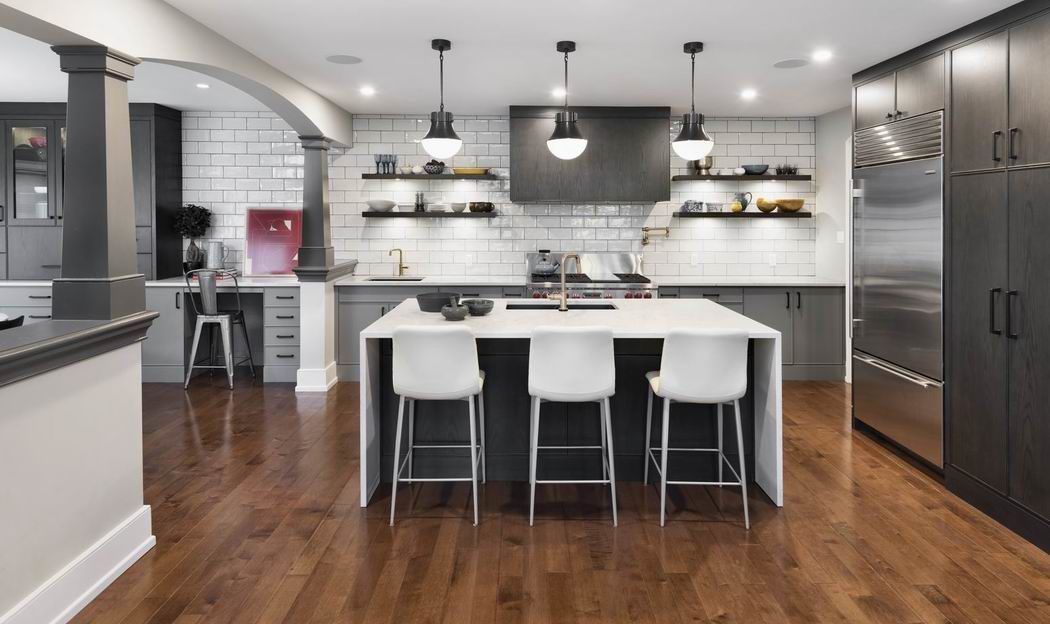The nature of renovations is such that you can pretty much guarantee something will go wrong.
Renovators will never know exactly what they’re going to find behind your walls until they open them up. If they’re experienced, they’ll have a good idea of typical things they might find, like knob-and-tube wiring in an old Glebe home, but they can still hit obstacles with the unexpected.
A good example is professional contractor and TV host Bryan Baeumler. He’s had several shows on HGTV (now Home Network) and one, called Island of Bryan, showed how a project can go spectacularly off the rails. In his case, he knew what he was getting into and chose to dive in anyway, but still…
Download a pdf of this article
A year behind schedule
For close to two years, Bryan and his wife, Sarah, restored an abandoned boutique hotel resort in the Bahamas, an adventure chronicled on the show. Their initial plan was to take six months renovating enough of the property so that they could open. But it would be another year after that before they could finally open for business.

Their journey is an example of how problem after problem delayed progress, chewed up their budget and forced a rethink of many of their plans.
So, if someone as well known and experienced as Bryan Baeumler can have a project go off the rails, does that mean you’re doomed to the same fate?
Not at all. It just means you have to be prepared.
“Surprises are inevitable, but a key part of a successful project is both anticipating them and knowing how to respond when they arise.”
Kaylie Chamberlin
Owner, ARTium Design Build & Just Basements
7 key steps
Keeping your reno from going off the rails comes down to seven key things, and the responsibility to adhere to them is on both you as the homeowner and whoever you hire to do your project. Those seven keys are:
So, what does it mean to have a reno go off the rails?
It can mean several things, but typically involves going over budget and/or blowing your timeline. And those two issues usually crop up thanks to hidden obstacles and something referred to as scope creep.
Scope creep is when the defined parameters of the job increase or balloon because after the project has begun, you think of other things you want to add, such as replacing all the flooring on your main floor when you were initially planning to just renovate your kitchen.
Let’s take a closer look at those 7 keys.
No. 1: Plan, plan, plan… and plan some more
Bryan Baeumler would be the first to tell you that the best way to keep your project on track is to plan, plan, plan. Part of the reason his resort project went sideways is because they jumped in so quickly.
He admits that it would have been better to take two years to plan it out first (instead of just a couple of months), but that kind of timeline was not part of their business plan for the project.
“We knew what we were getting ourselves into,” he says. “It was chaos trying to plan and manage a project as you’re into it.”
Ottawa’s top renovators emphasize the importance of planning. It’s the cornerstone of every successful project, from a simple DIY to a major overhaul of your home.
“Prepare, prepare, prepare — I can’t stress that enough. An hour spent up front saves three or more down the road,” says Brent Young, president of Carleton Kitchen & Bath.
“How many times do we hear that projects are months behind schedule and thousands of dollars over budget — and it’s all preventable. A successful project is all about planning.”
Jacob Kirst
President, Lagois Design-Build-Renovate
What does planning mean?
First, it means defining your goals, says Steve Barkhouse, owner of Amsted Design-Build, which holds the record as Ottawa’s annual renovator of the year winner. “Really know what it is that you want to achieve.”
Ask yourself:
- What works in your space right now and what doesn’t?
- What are must-haves and what are nice to have if your budget allows?
- What’s the future of your home? Is your family growing? Are kids moving away? Will you be downsizing? Is it your forever home or will you move in a few years?
Be sure to write all of these things down, adds Kaylie Chamberlin, owner of ARTium Design Build & Just Basements. Once you’ve done that, you can take a look at the scope of your project to help you determine whether you have the budget for it and what kind of renovator you’ll need. (More on budgets and hiring in a bit.)
If your renovation is anything more than just replacing kitchen cabinets or a bathroom sink, you might consider hiring what’s commonly known as a “design-build” renovator.
That’s because for many homeowners, the path from vision to reality is fractured, explains Jacob Kirst, president of Lagois Design-Build-Renovate. If architects, contractors and trades are all working in silos, the homeowner can be left to manage the gaps, carry the risk and make decisions without clarity, he says. With design and construction under one roof, your architect, designer, estimator and builder are aligned from day one. Ideas aren’t just imagined, they’re tested against your site, your budget and your long-term goals. Every detail, from sketches to final finishes, is co-ordinated and managed seamlessly.
Why does this matter?
“Because it protects your investment,” says Kirst. “You’re not caught between conflicting opinions or hidden costs. Instead, you’re empowered with knowledge and guided through the pros and cons of every choice so you can make decisions with confidence.
“At its heart, design-build is about trust. It’s about having a team of advocates who listen deeply, understand ‘why,’ and work as your partners to bring it to life. It’s about creating a home that adapts as your life evolves, stands the test of time and reflects the art of living at its very best.”

Once you have your team in place you can start on the design. For all but the most basic remodel, it’s wise to have it professionally designed, whether that’s through an independent designer or architect you’ve chosen or through your renovation firm’s in-house design staff.
“The biggest mistake people make is seeing design as a luxury service; they really need to realize it is an essential service,” says Moneca Kaiser of Moneca Kaiser Design Build. “It’s the only way to control cost and ensure value.”
It also makes it easier for you and your team to choose all your features and finishes before construction begins, which is a crucial step in keeping things from going off the rails. Specialized materials, in particular, can slow things down if they get back ordered. Even typical materials, like glass for showers, railings and stairs, are slow to arrive these days, notes Roy Nandram of RND Construction.
And having all these decisions made ahead of time means there is one less thing to worry about once construction has begun.

Don’t jump in too soon
When it comes to construction, don’t be in a rush to jump into this stage, says Young. Rushing into things before they are properly planned out is a recipe for going off the rails.
Often a renovation is spurred by things happening in our lives, like a baby on the way or wanting a project done before Christmas so you can host the family for dinner, but these are not good reasons to start prematurely, adds Chamberlin. You’ll just cause more grief in the end.
“You’re better to delay that start date and start when everything is ready than to start it early and have delays in the project because things aren’t in yet or not prepared,” says Young.
Bumps in the road
It’s also important to plan for bumps in the road, says Chamberlin, because you’re almost guaranteed that something will come up to slow down your project, including delays in getting permits issued, for instance. But if you’re working with a good company, they will draw on their experience to anticipate and see patterns to plan for what they can, she says.
For instance, for the past several years, ARTium & Just Basements have not found any cast iron piping in Ottawa homes that is still viable. That has prompted the firm to recommend to its clients that if they have cast iron piping to budget for replacement because if the company must break up the slab to connect new plumbing, they will invariably find that the old piping is no longer holding up.
Experienced firms will do as much investigation as they can ahead of time to determine what they’re dealing with in a home. That includes cutting holes in walls to peek inside and bringing through their electricians, plumbers and other trades to identify red flags.

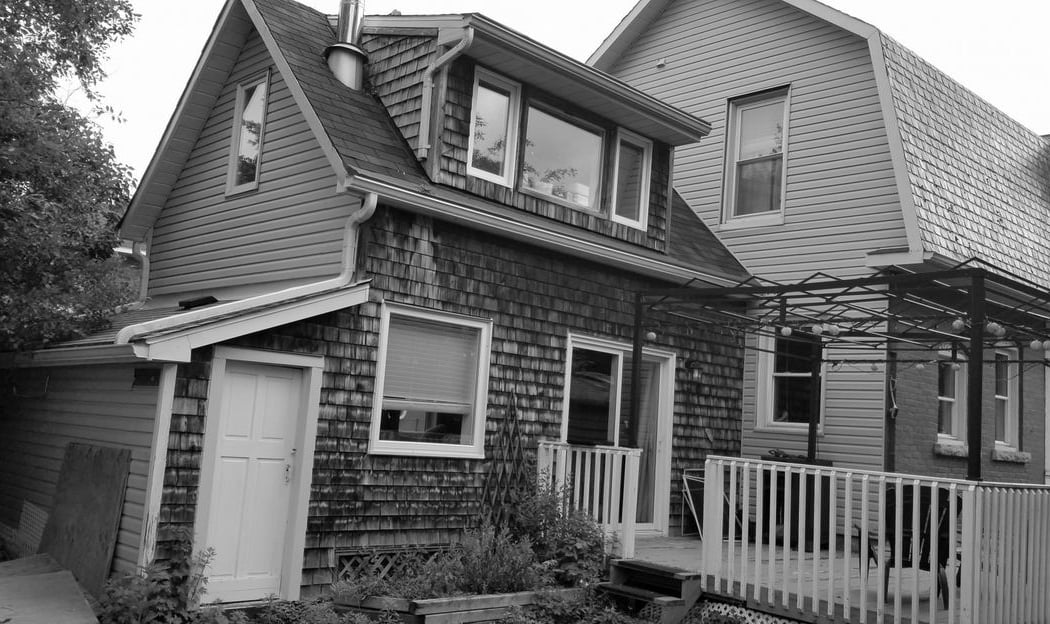
The above is an example of a complex project that finished on time, thanks to careful planning before construction.
The project by Lagois involved demolishing a poorly done old addition and failing deck and replacing them with a much more functional two-storey addition that respected its neighbourhood.
It was a five-month project that did have hiccoughs along the way — such as discovering after construction had begun that there was some incorrect plumbing that had to be fixed — but Lagois says that in their exit interview once the job was done, the clients gave the company a 10 out of 10 score on the experience.
In another example, the project below by Carleton Kitchen & Bath is a good illustration of preparation versus execution.

This renovation took 12 weeks to complete, but the planning stage was closer to two years, Young says. That was partly because the homeowners needed almost a year to decide how much of a renovation they wanted to do, but then there was another 10 months of designs and revisions before they were ready to go.
It’s a good example of why it’s so important to thoroughly plan everything out before you start.
“Renovations are most challenging when the homeowners remain in the house during construction. Work must be planned around their schedule, with increased focus on daily safety and thorough cleanup.”
Roy Nandram
President, RND Construction
Harmful substances
Something else to be aware of in your planning is what’s known as the Designated Substances Report. Many in the industry either aren’t aware of this or choose to brush it off as insignificant, says Amsted’s Barkhouse, but it can not only derail your project, it can end up costing you a lot of money.
Here’s what you need to know:
The property owner is responsible to ensure their home is free of certain designated substances, such as asbestos, before a renovation or repair begins.
Specific designated substances found in many Ottawa homes can be hazardous to occupants and workers when disturbed during construction. They need to be identified before work begins.
Any Ottawa home built before 1994 needs to have a report done before work begins. A reputable firm should bring this to your attention and many will facilitate getting the report done for you, building the cost into their estimate.
If you don’t get the report done, the Ministry of Labour can shut down your project and possibly fine you. You also leave yourself open to a potential lawsuit from a worker claiming adverse effects from a hazardous substance while working on your property.
Research sources
When it comes to planning your renovation and your initial research, the Canadian Home Builders’ Association (CHBA) and the Greater Ottawa Home Builders’ Association (GOHBA) both offer helpful tips and advice. The CHBA even includes worksheets to help you plan.
You’ll also find lots of helpful advice on All Things Home. (back to top)
No. 2: Hire pros
Along with not undertaking proper planning, another sure-fire way to have your reno go off the rails is not hiring the right person for the job. We’ve all heard the horror stories of a reno gone south because of a contractor who skipped out or because the work was so shoddy that it had to be ripped out and done over again.
But if you take the time to carefully vet your renovator, you shouldn’t have a problem.
Bryan Baeumler likens the process to choosing a spouse, because it really is a relationship you’re creating. And since you’re trusting that person with your biggest asset and your haven, you want to be sure you do trust them.
“You want to make sure you’ve hired someone you can talk to, someone you trust, someone you have a good relationship with,” he says.

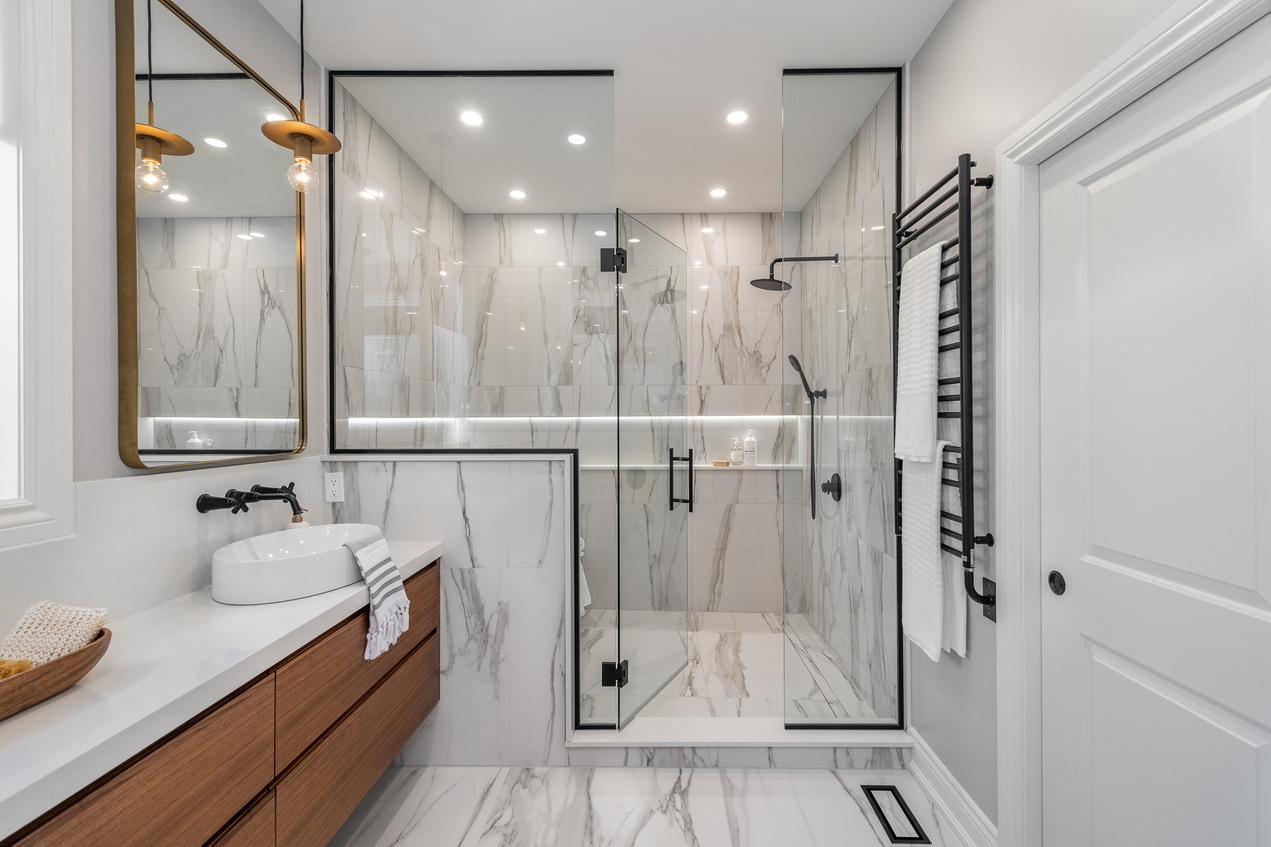
There are different routes to go when choosing someone for your project, depending on your needs and resources. Not everyone can afford an architect or a designer, for instance. Or maybe you want to manage the project yourself, or maybe you just need a small contractor for a small job rather than a big design-build firm.
So, how do you find someone?
Referrals: Many of the good firms, whether a small contractor or a big design-build company, get most of their work through referrals. So, start with friends and family you trust who have had work done and ask if they’d recommend their contractor.
GOHBA/RenoMark: The local housing association is another option. Members have to follow a code of ethics, providing some assurance to homeowners. Within the association is a program called RenoMark, which provides even stricter guidelines for participating companies, who are pre-screened and must meet strict guidelines for things such as insurance, workers’ compensation coverage and credibility.
All Things Home: Our site is, fundamentally, a resource site for homeowners and buyers. It includes curated directories of professionals you can turn to when you’re starting your search. Although we don’t specifically endorse the companies listed in the directories, if they have been included then they have at least had a first-level check to make sure they are reputable.
Baeumler Approved: Baeumler started the Baeumler Approved program to help homeowners navigate the home improvement and building industry. It’s worth noting that not all of Ottawa’s top companies take part in this program, but the ones included have been vetted — although you still need to do your due diligence.
BBB: The Better Business Bureau is helpful not only for the big guys but for some of the smaller ones, too, and the BBB is an impartial way to check on a company.
For some of the small firms, it can be hard to know whether they’re turstworthy, especially these days, when anyone can build a professional-looking website, says ARTium’s Chamberlin. If they don’t showcase their past projects or mention how long they’ve been in business, this is a red flag.
OakWood chief operating officer Patricia Liptak-Satov points out that you also need to pay attention to how long they’ve been in business.
“Many simply total up the number of years of everyone in the company to come up with an impressive number — so 10 people with three years’ experience translates into 30 years of experience.”
Once you have a shortlist of possible companies or contractors, you need to research and interview them. The CHBA has a great list of questions to ask on their website, but one you’ll definitely want to ask is for a list of references and whether or not you can visit a current job site to get an idea of how they work.
And don’t neglect to check out the references, including visiting the clients’ homes. “It doesn’t guarantee their next project will be exceptional, but it’s certainly better than having no track record at all,” says Chamberlin.
If you’re researching renovators in the fall, there’s a great annual opportunity to both see their work and ask them questions. Every October, several of Ottawa’s top renovators, who are all RenoMark members, take part in a house tour showcasing some of their recent renovation projects.
Remember, choose your team based on your project, your personality, your needs and your budget, says Amsted’s Barkhouse.
“Choose carefully — people don’t do that, they rush into choosing someone, but that’s not the way to choose.”
Steve Barkhouse
Owner, Amsted Design-Build
If you want to try hunting online for someone, you can try an online forum like the Facebook group Find a Contractor Ottawa, but keep in mind that those folks have not been vetted and you need to check them out very thoroughly. (back to top)
No. 3: Have a realistic budget

If you’ve never dipped your toe into renovations, you may have no idea how much a renovation should cost you.
There are a lot of variables and you really won’t know until you start getting estimates from renovators, but it’s good to have at least a ballpark idea.
So, it’s helpful to come up with a realistic budget and that means doing some research. One place to start is the annual Cost vs. Value Report put out by The Journal of Light Construction. Although it has U.S. pricing, you can extrapolate to give you an idea. (Note that the 2025 report was not yet available at the time of writing.) You can also refer to the residential renovation price index published by Statistics Canada.
Then it’s a matter of being forthcoming with your renovator, says Carleton Kitchen’s Brent Young. Many homeowners don’t like to reveal just how much they’re willing to spend because they fear their renovator will try to find ways to use up the whole budget, but if you trust your renovator and are honest with them, they can help you find ways to get the most out of your budget and stretch how far it can go.
Your contingency fund
It’s also important to plan for contingencies. That means setting aside a portion of your budget to deal with those unexpected surprises that come up, like finding wonky wiring behind your walls. Your contingency fund is not for extras like switching to a marble backsplash after already deciding on ceramic tiles.
We often hear celebrity contractors say your contingency fund should be 25 or 30 per cent of your budget, which is a huge amount. Most good local companies recommend a 10 per cent contingency fund, saying they should be able to effectively anticipate likely issues that will come up so that you don’t need an overly large buffer for emergencies.
Making comparisons
Homeowners assume contractors are all essentially the same and based on that, they assume the lowest price will give them the best value and save them money, notes OakWood’s Liptak-Satov.
“But often the lowest price costs them the most. If a contractor’s price is significantly lower, there’s a reason. They haven’t included something in their proposal, which isn’t discovered until the project starts, or they have quoted on much lower quality options.”
If it sounds too good to be true, it likely is. (back to top)
No. 4: Get everything in writing
One of the best ways to protect yourself as a consumer and help keep things on track is to make sure you and your renovator have a signed contract that details everything, including:
- scope of work
- materials to be used
- schedule of work
- when payments are to be made
- what happens if a product needs to be substituted
“Everything needs to be planned very clearly, everybody needs to understand it and it needs to be documented so that everybody understands it, and then it needs to be signed,” says Barkhouse of Amsted.
One way to put yourself at risk of your project going off the rails is to be tempted by a lower “cash only” offer — which means you have no protection — or by automatically opting for the lowest offer. Make sure you’re choosing someone reputable and make sure you have a signed contract.
Written agreements and contracts are important even if you’re DIYing, since there will be some professionals you need to hire, like an electrician or a plumber, says Carleton Kitchen’s Brent Young. If you have only verbal agreements, it can lead to conflict and miscommunication, while a written record helps everyone involved to “remember” what’s been discussed and decided on.
There are different types of contracts that can be used. The CHBA explains them in detail. (back to top)
No. 5: Be flexible
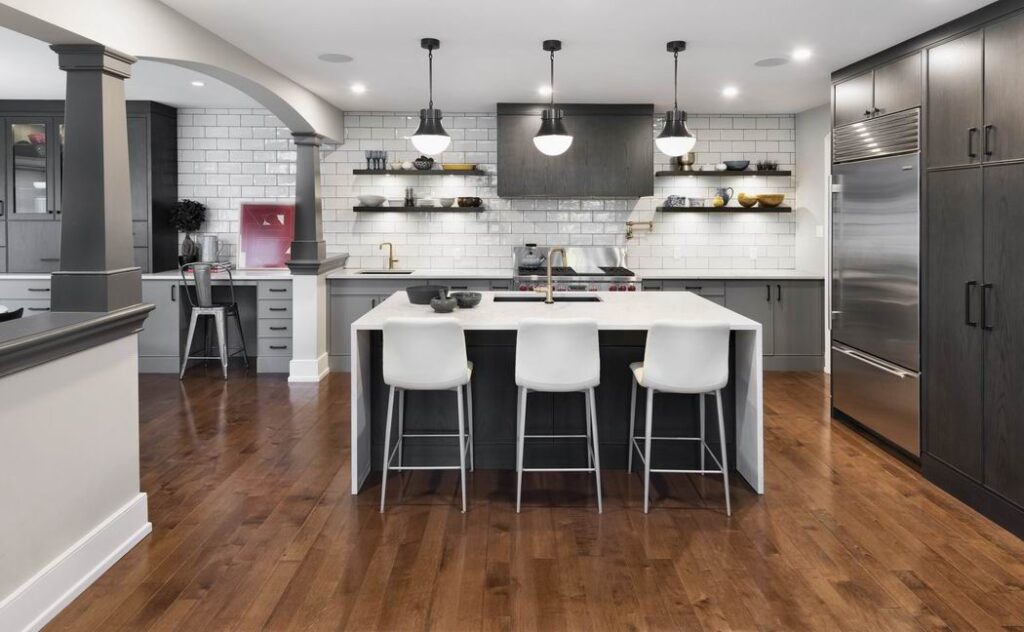
You can expect your renovation to have hiccoughs, which is why you and your renovator need to be nimble enough to adjust.
“When choosing a renovator or builder, the question isn’t just what they can create, it’s how they work with you,” says Lagois’ Kirst.
How they work with you includes flexibility because no matter how much a renovator plans, something will come up to disrupt that plan.
“One hundred per cent of the time you will find things you don’t expect,” says Bryan Baeumler.
That means you need to be prepared to shift gears, make changes and adjust.
In the project above by Amsted, StyleHaus Interiors and Irpinia Kitchens for instance, a structural pole was found within the millwork during the kitchen demolition that required an adjustment to the cabinet layout. The team was able to come up with a way to integrate the pole seamlessly while avoiding extra costs and without compromising storage.
It becomes a balance between planning and having some flexibility as the process unrolls so that you can roll with the punches.

In another example, a last-minute permit requirement threatened to add $75,000 to a project by Revision Built, so “we went back to the drawing board,” says owner Phil Coe, and a small design tweak not only avoided the cost but actually improved the layout, simplified construction and boosted the home’s energy performance.
“Sometimes the best features aren’t in the original plan — they’re discovered along the way.”
At the same time, the delay in construction allowed time to revisit the material selections. “We shopped around, took advantage of seasonal price drops and supplier overstock and landed on finishes that elevated the project without blowing the budget.”
Every renovation is a journey, he adds, and some of the most rewarding features in a home come from adapting to the unexpected. “Flexibility isn’t just a virtue, it’s often the key to a better outcome.”
Another way you can help to minimize disruption, particularly when it comes to materials, is by writing down a plan B when you’re in the planning stage, says Carleton Kitchen’s Young. That way if a material you want — like a particular tile — is no longer available or will be delayed too long, rather than going back to square one, you can easily transition to the next option. (back to top)
No. 6: Communication
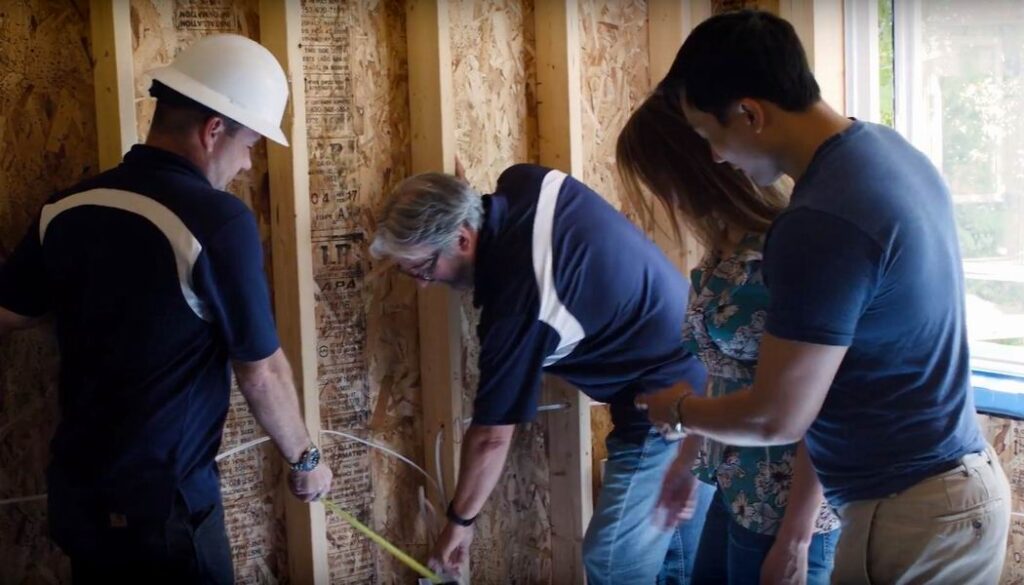
Communication is key to a successful project and one that top companies will not shy away from. Your renovator needs to be in regular contact with you to ensure a smooth project, says RND’s Nandram.
At the same time, as a homeowner, be involved and ask questions — don’t be afraid to go and see what’s happening. A renovation, especially a big one, can be intimidating. But if you’re there every step of the way, you’ll likely come out more satisfied and things won’t pile up as a surprise.
“Clear, consistent communication is the backbone of a successful project,” adds Lagois’ Kirst. “Trusted advisers listen, guide and ensure you understand the ‘why’ behind every option.”
Renovations are full of decisions; part of your renovator’s role is to simplify them, so you can feel confident every step of the way.
When you’re interviewing potential renovators, find out what their process is for communicating. If it’s something they do not put much stock in, that should be a red flag. “The key is constant communication,” says Nandram. (back to top)
No. 7: Minimize change orders
“Change order” is the term most in the industry use for things that need to be altered during construction. They are not part of the original contract and typically require extra planning, time and money.
Change orders are one of the quickest ways to go over budget and probably occur about half of the time, says Carleton Kitchen’s Young. Even if it’s something simple, like asking your renovator to paint an extra room, that extra time will interfere with the contractor’s schedule since they’ll already be booked for the next client. It might also disrupt the schedule of trades that your renovator has arranged for your project.
An easy way to keep your project on track is to minimize the number of change orders required.
At some point, says Baeumler, you’re going to feel like your renovation has gone off the rails.
“It’s a dirty, messy, invasive, expensive endeavour full of blood sweat and tears. That being said, the best you can do is plan for it — plan, plan, plan, plan, before you do anything.
“If houses and renovations came like Lego in a box, where every piece had its place and you just click them all together… then that would be great. But that is not how we build and renovate.” (back to top)
